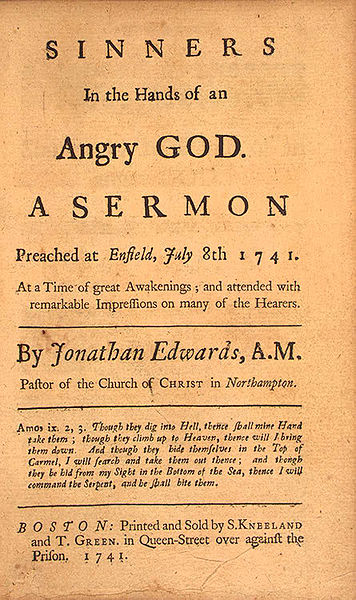The First Great Awakening or the Evangelical Revival was a series of Christian revivals that swept Britain and its thirteen North American colonies in the 1730s and 1740s. The revival movement permanently affected Protestantism as adherents strove to renew individual piety and religious devotion. The Great Awakening marked the emergence of Anglo-American evangelicalism as a trans-denominational movement within the Protestant churches. In the United States, the term Great Awakening is most often used, while in the United Kingdom, the movement is referred to as the Evangelical Revival.
Jonathan Edwards' 1741 sermon "Sinners in the Hands of an Angry God"
Methodist leaders active in the Evangelical Revival (clockwise): John Wesley, Charles Wesley, George Whitefield, Joseph Benson, John Fletcher and the Countess of Huntingdon (1895 Welsh illustration)
Philadelphia's Second Presbyterian Church, ministered by New Light Gilbert Tennent, was built between 1750 and 1753 after the split between Old and New Side Presbyterians.
The Thirteen Colonies were a group of British colonies on the Atlantic coast of North America during the 17th and 18th centuries. Grievances against the imperial government led the 13 colonies to begin uniting in 1774, and expelling British officials by 1775. Assembled at the Second Continental Congress in Philadelphia, they appointed George Washington as commander-in-chief of the Continental Army to fight the American Revolutionary War. In 1776, Congress adopted the Declaration of Independence as the United States of America. Defeating British armies with French help, the Thirteen Colonies gained sovereignty with the Treaty of Paris in 1783.
The Thirteen Colonies of British America: (Dark Red): New England Colonies (Red-Brown): Middle Colonies (Brown): Southern Colonies
Join, or Die by Benjamin Franklin was recycled to encourage the former colonies to unite against British rule.





